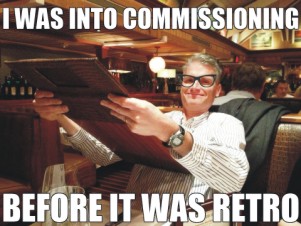
“Let’s cut in half the energy wasted by our homes and businesses over the next twenty years.” Building owners who have undertaken retrocommissioning for their facilities may be the only group in the country that wouldn’t find that State of the Union challenge too daunting: The most comprehensive report about commercial retrocommissioning found median savings of 32 percent.[1]
Retrocommissioning is such a successful strategy because it’s not focused on any one system or technology, but instead looks at how to optimize the interaction of all systems — a 360° approach to efficiency, one might say. Retrocommissioning studies calibrate settings, adjust control strategies and staging, and make the building perform the way it was intended — actually, the energy performance is usually even better than intended, and those savings are significant and persistent.
But retrocommissioning’s success overshadows an ugly truth: Buildings almost never work the way they were intended, even, and especially, newly built buildings. Every building is a one-off. It’s all of the complex moving parts of a car without any assembly-line regularity or quality control, where “done” is the equivalent of the engine starting, with no one checking to make sure the lug nuts are tightened or that the A/C fan spins in the right direction. That “new building tune-up to make sure it works on day 1” is called commissioning.
That said, the difference between commissioning and retrocommissioning is more than the fact that one doesn’t happen until after 1,000 days of comfort complaints and huge chunks of revenue unnecessarily lost to energy waste. A commissioning agent — who should always be independent of the building’s architect, engineering and construction firms — is an owner’s advocate there throughout construction to make sure that things are done right the first time. Let’s make sure the equipment installed is the equipment specified, not the quick substitute because something was out of stock, such as a plastic hot water distribution that leaks every place it’s joined to metal. Let’s not put the thermostat behind the refrigerator, or have the daylighting photo sensor permanently shaded by a file cabinet.[2] Commissioning is the only way for a customer to ensure they get the building they paid for.
Commissioning adds cost during construction, a process famously driven by lowest bids. The best study estimates that new building commissioning adds 0.4 percent to the construction cost — a small percentage, but plenty of dollars — and has a 4-year payback on energy cost.[3] But the building owners who are savvy enough to pursue retrocommissioning’s savings should want to start saving that energy as soon as possible, and therefore should be just as interested in commissioning — and so should program administrators. Resident hipster Jeff Ihnen says it best:
[1] Mills, Evan. Building Commissioning: A Golden Opportunity for Reducing Energy Costs and Greenhouse Gas Emissions. Berkeley, Calif.: Lawrence Berkeley National Laboratory, 2009.
[2] All of those examples have been found by Michaels staff.
[3] Mills 2009.



